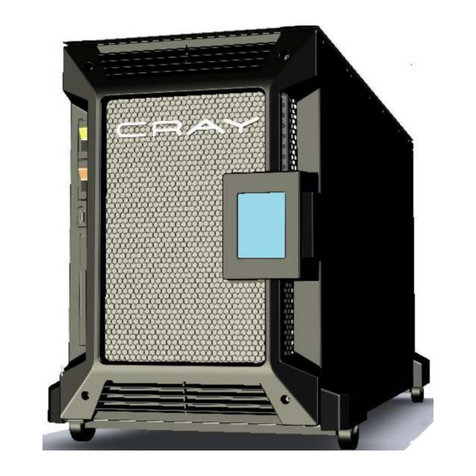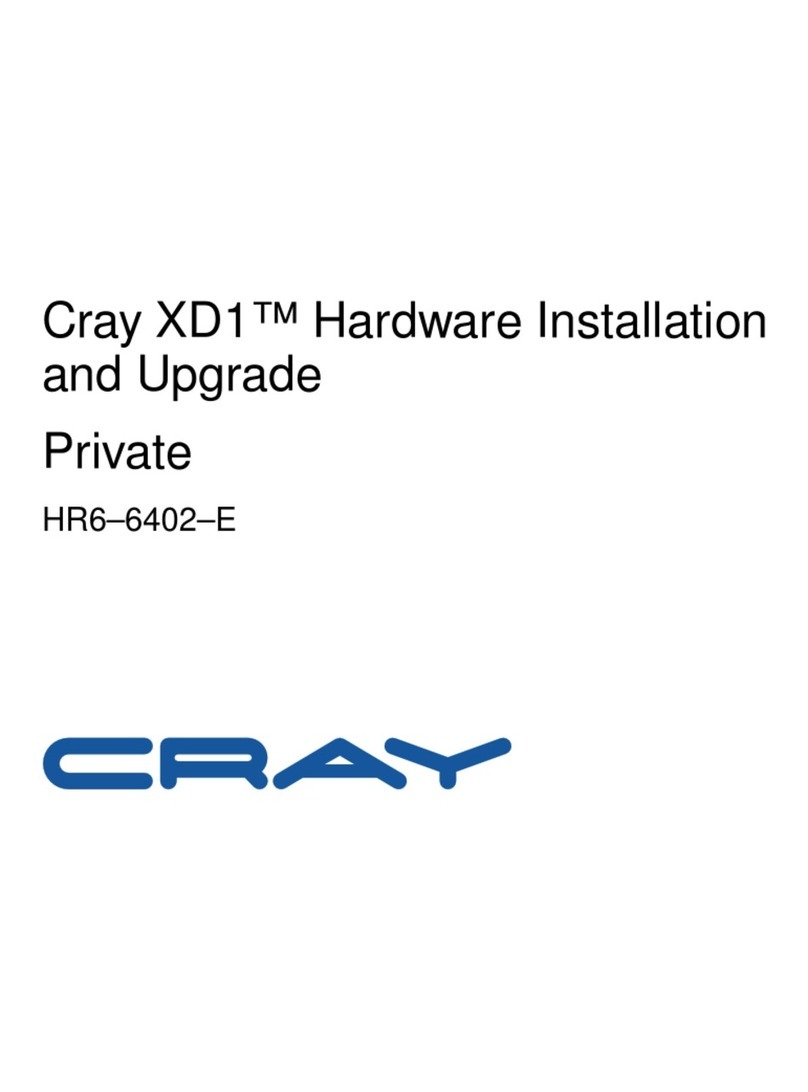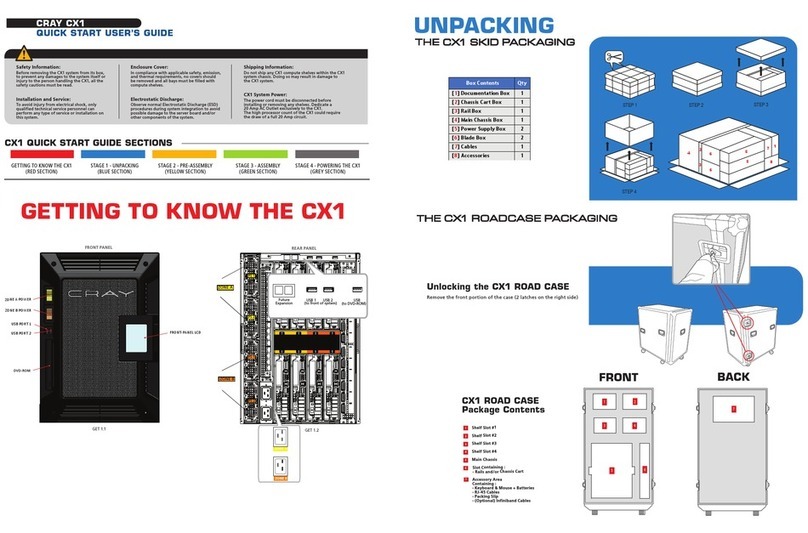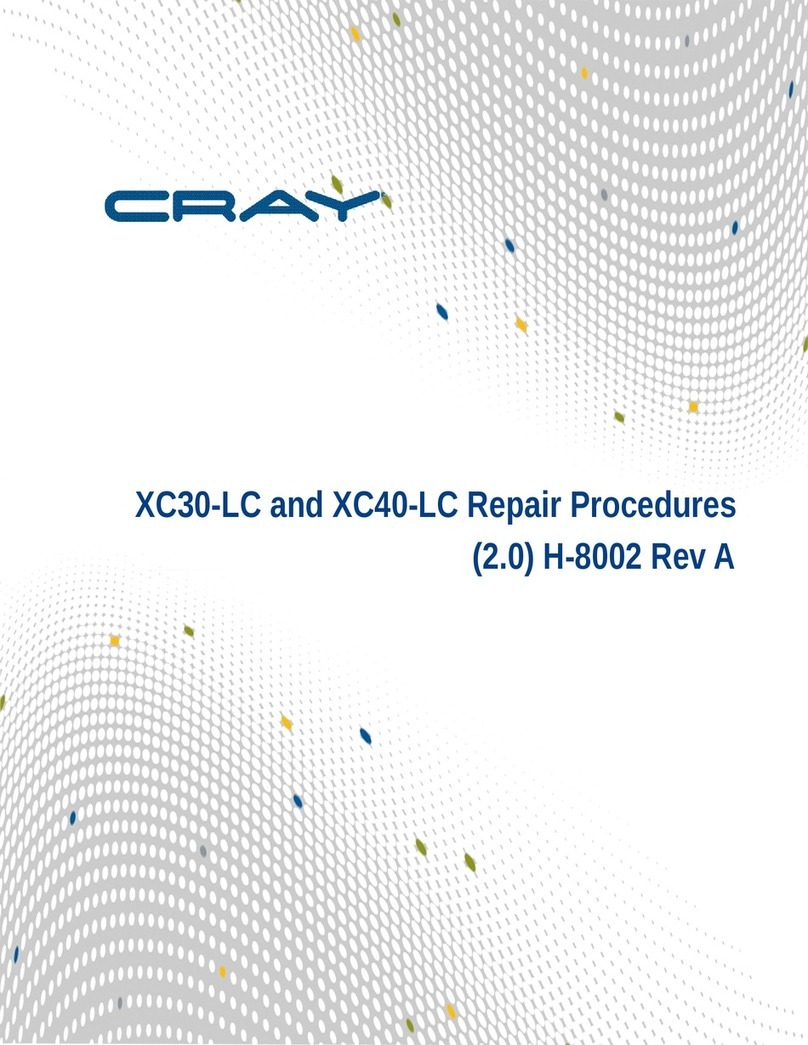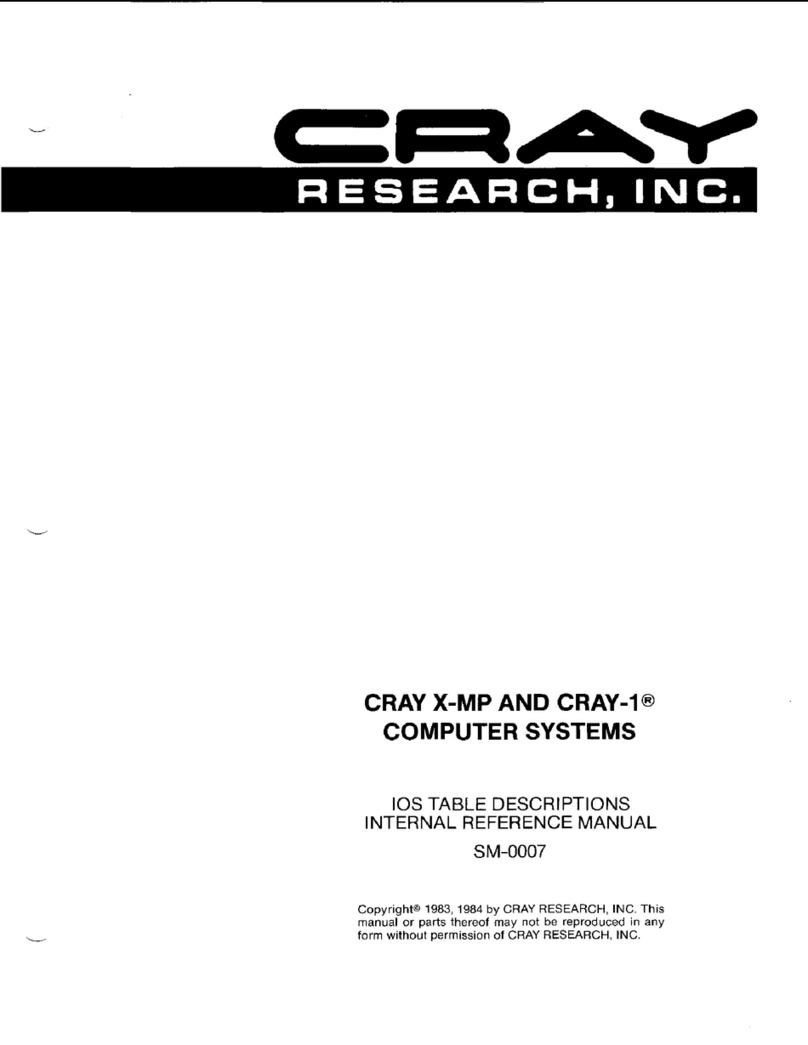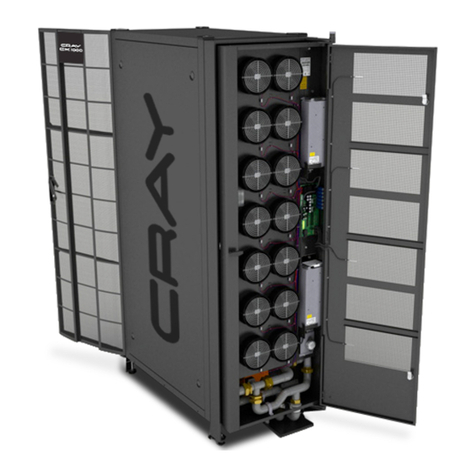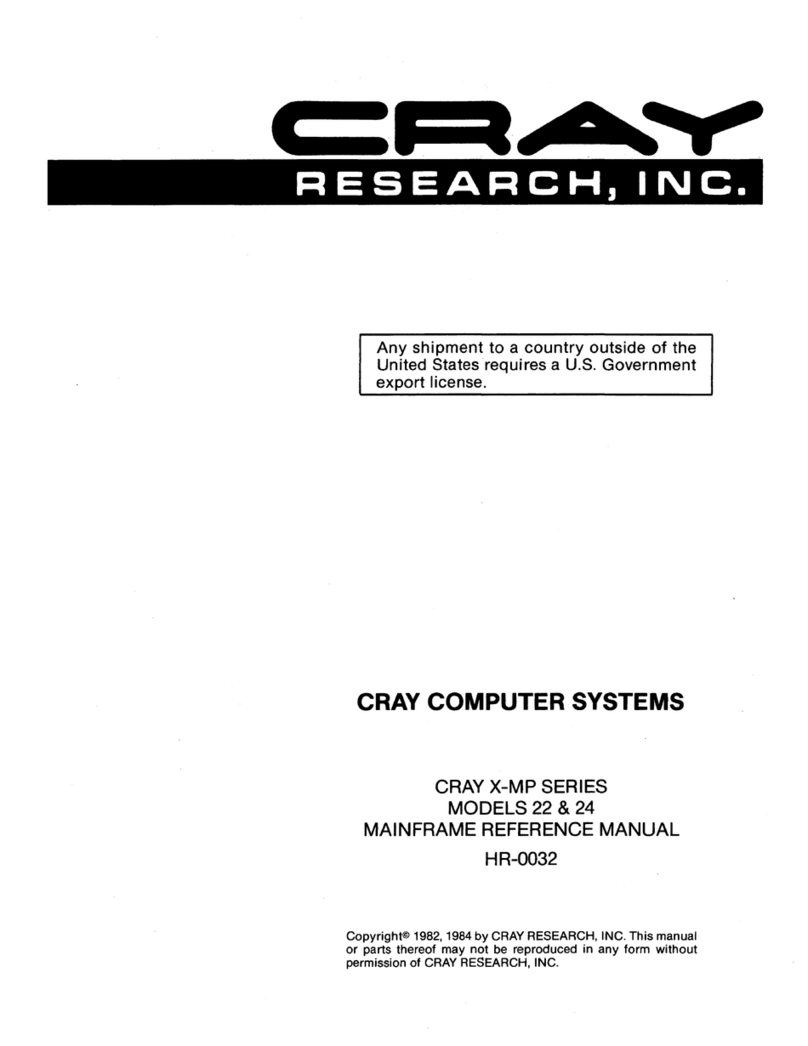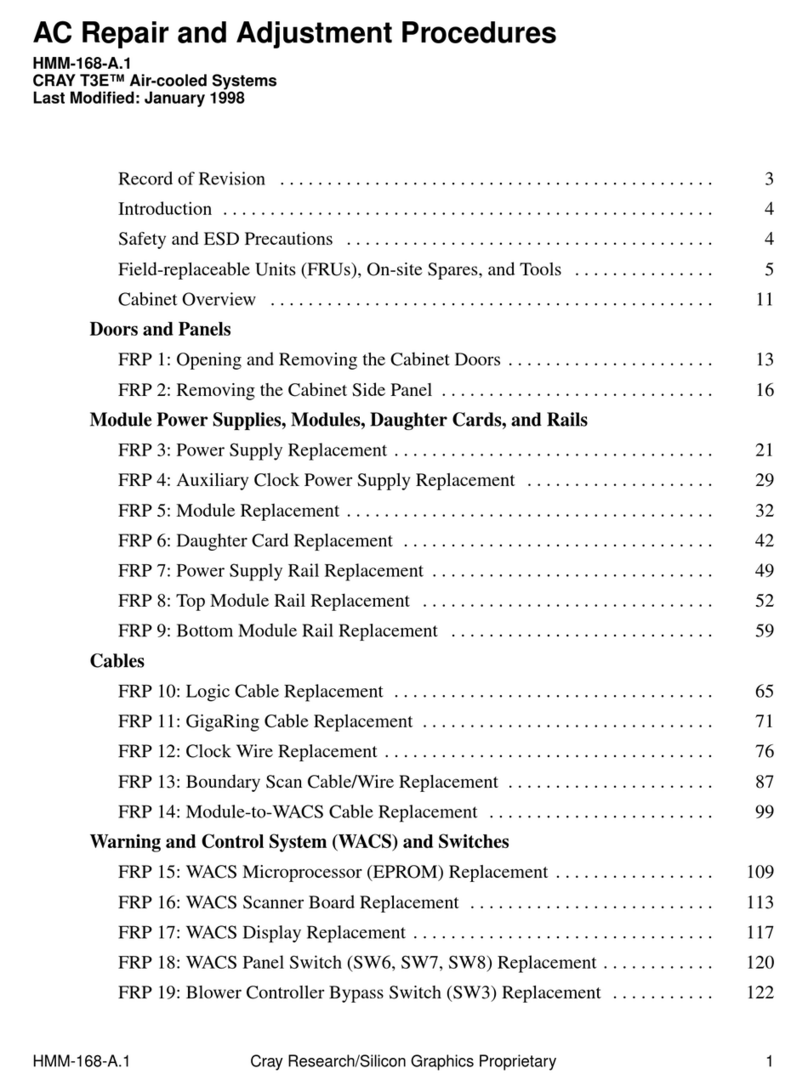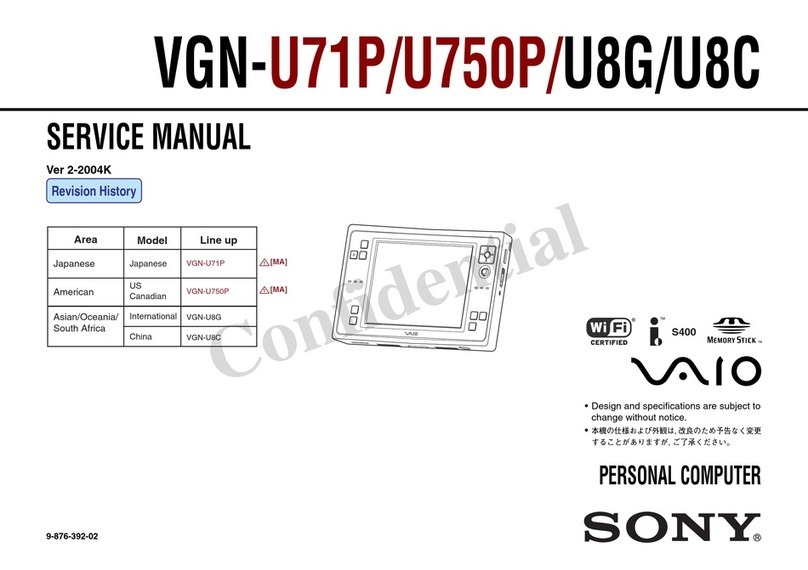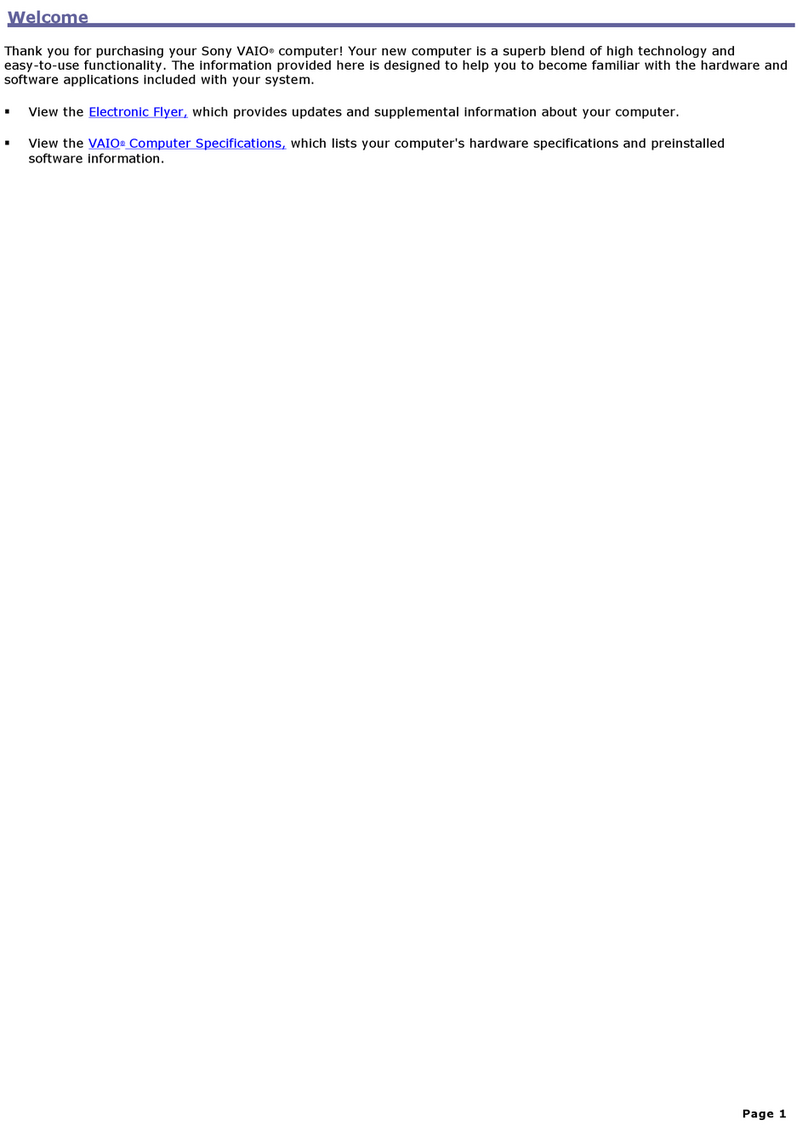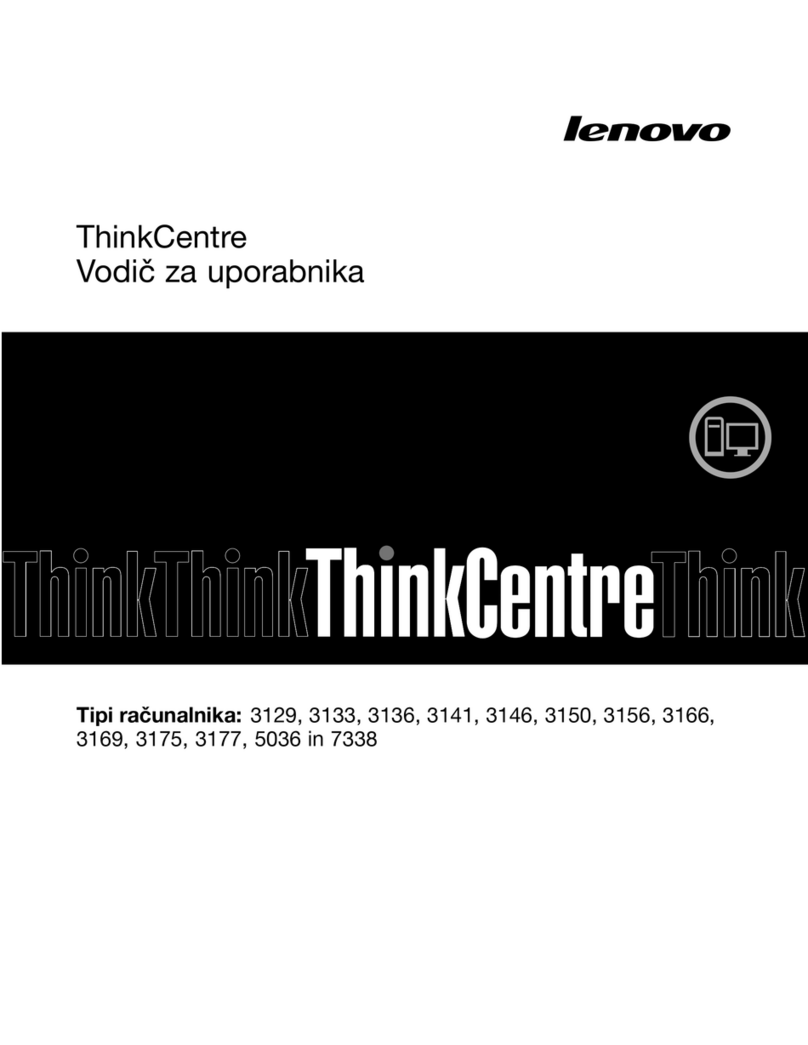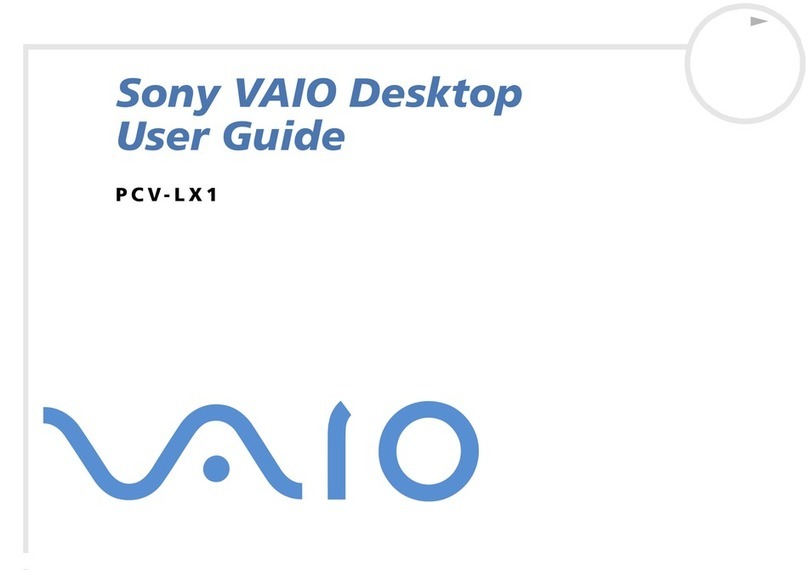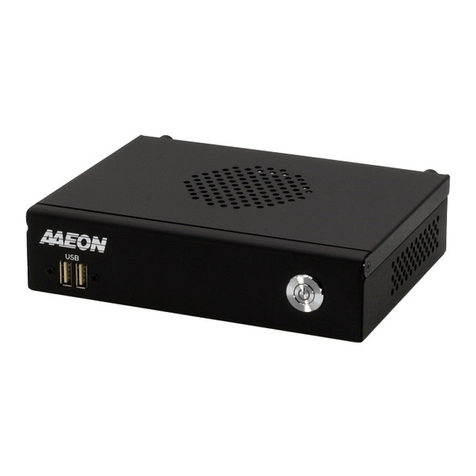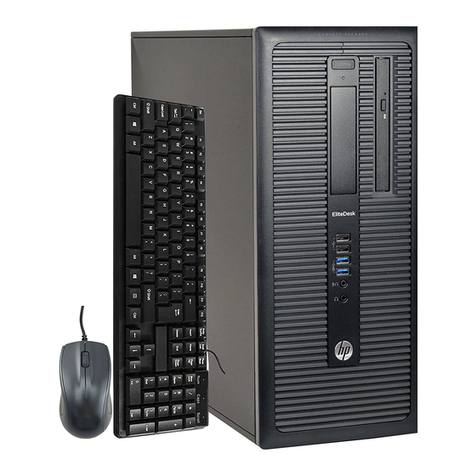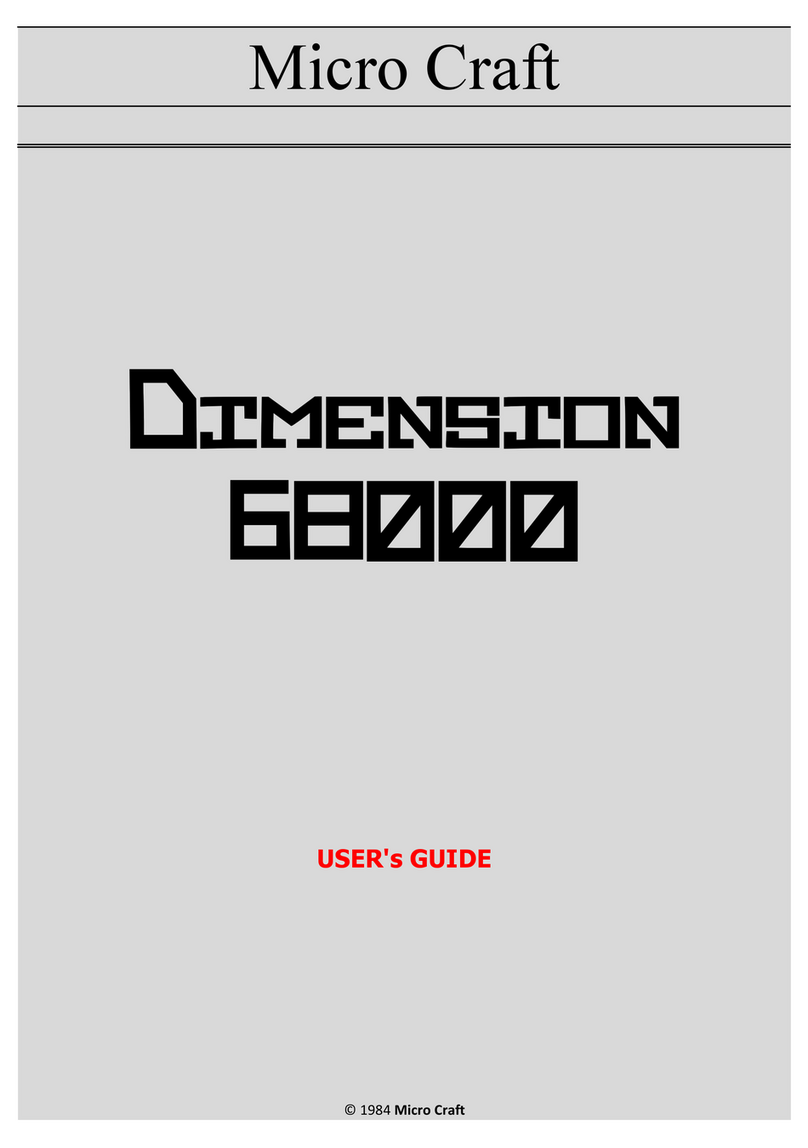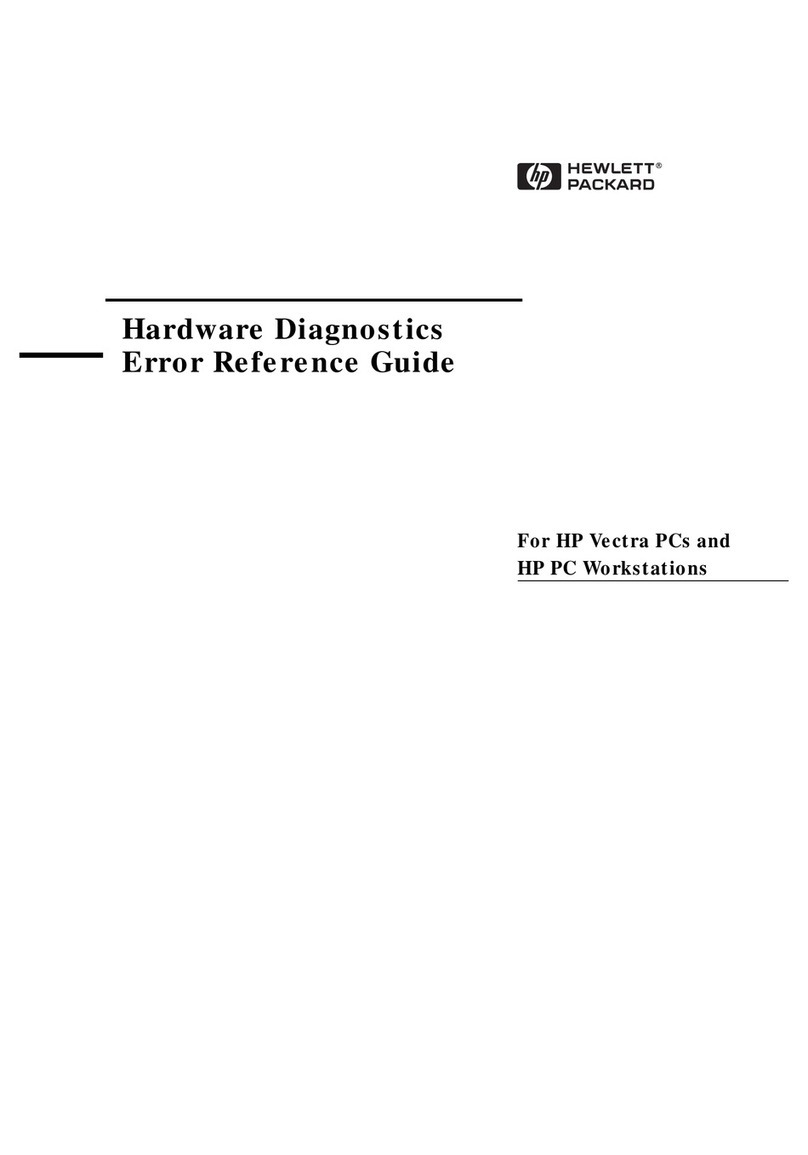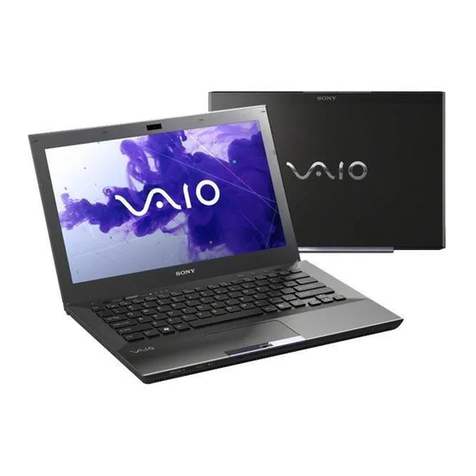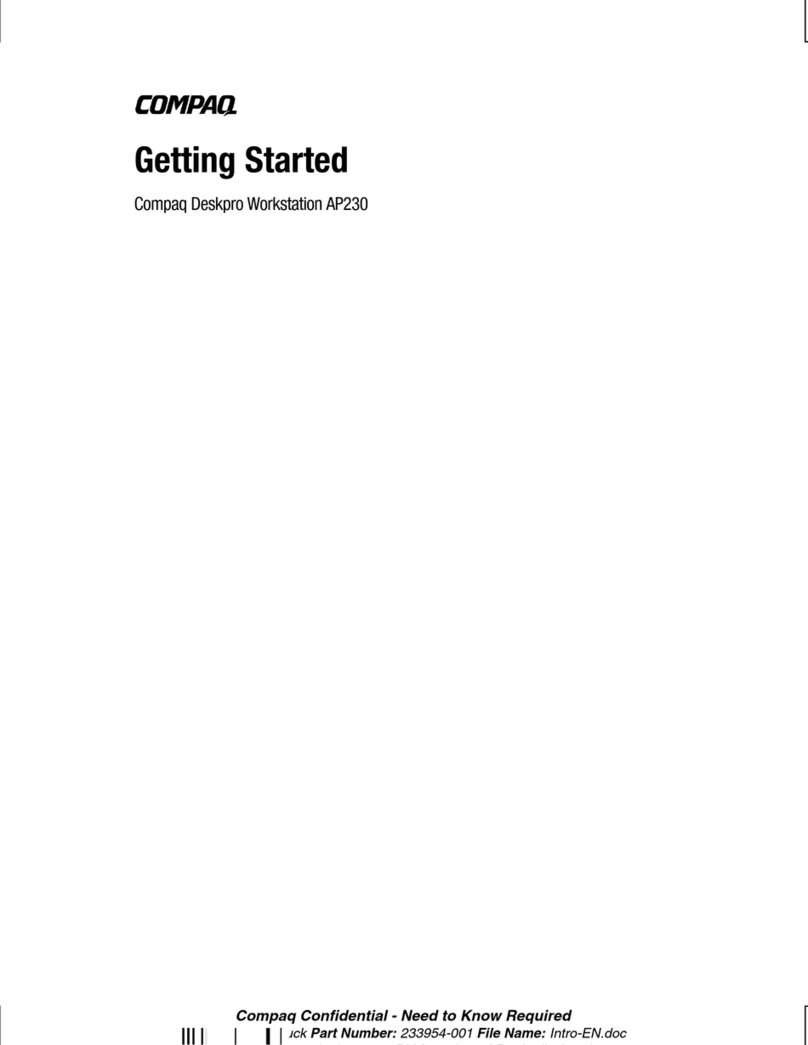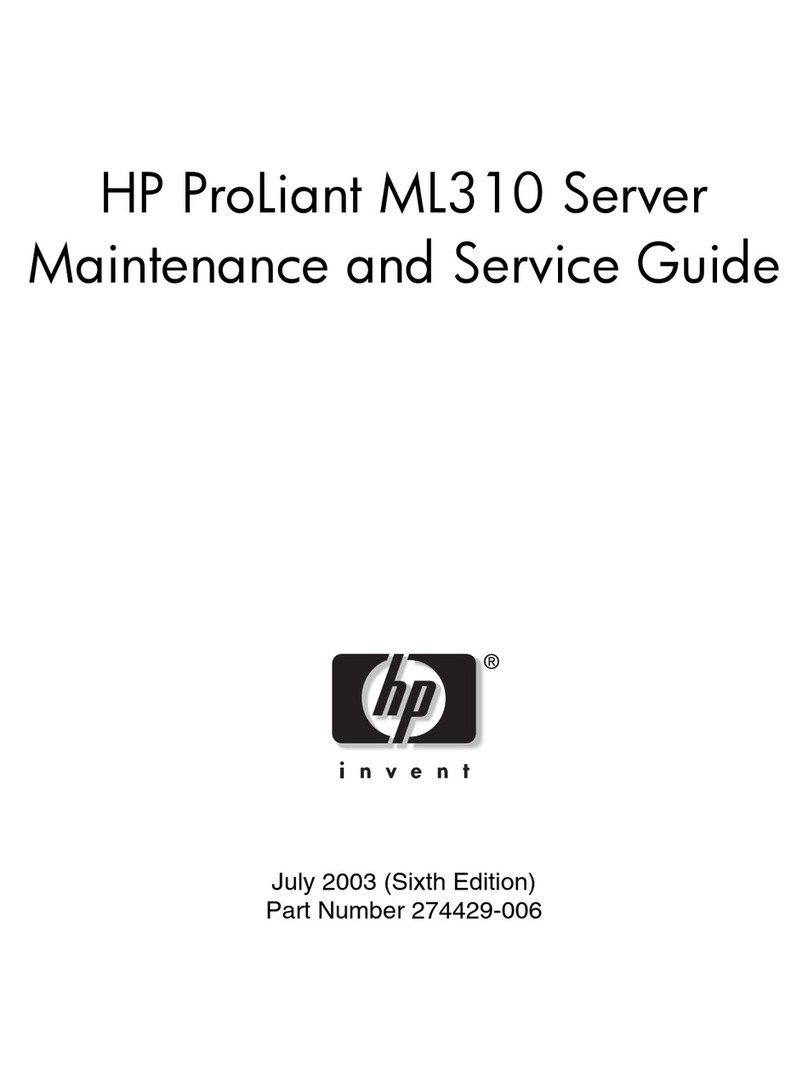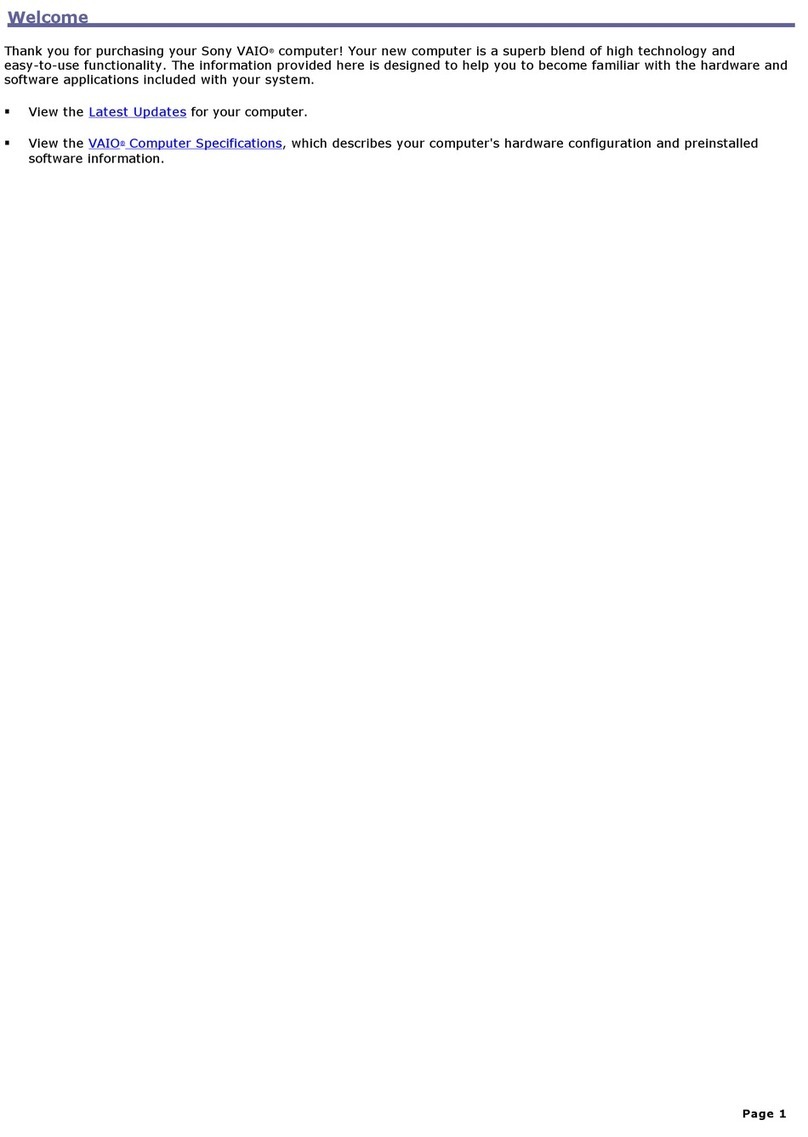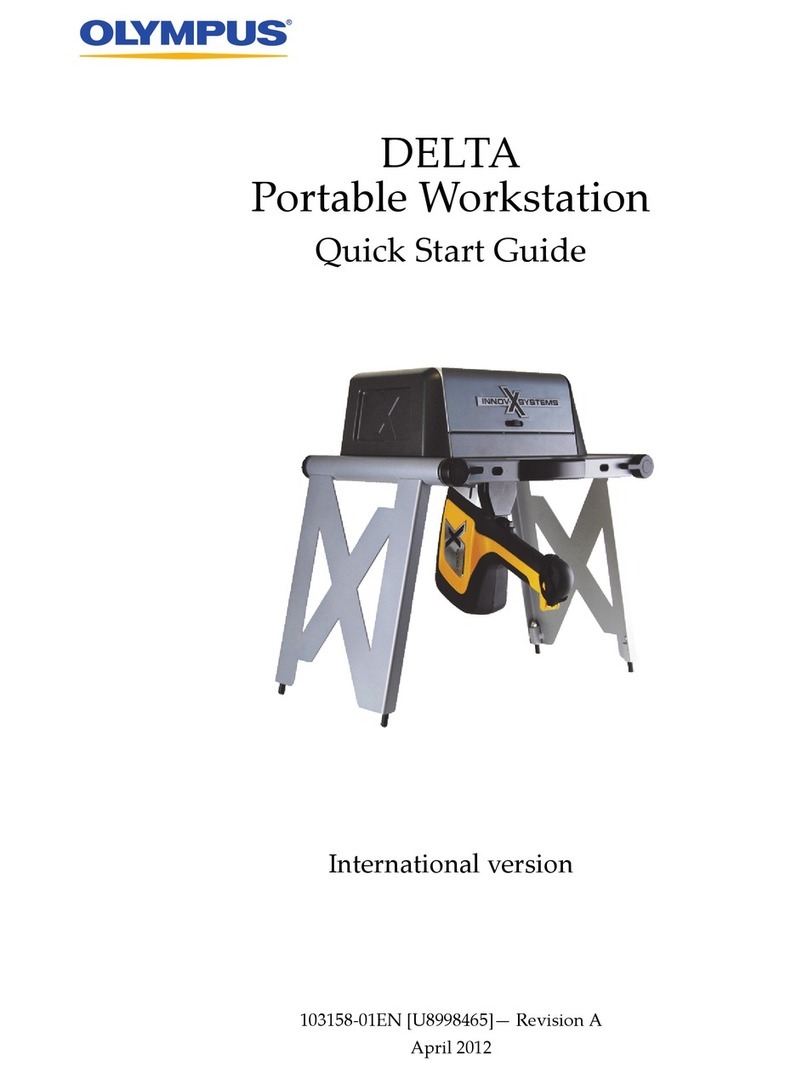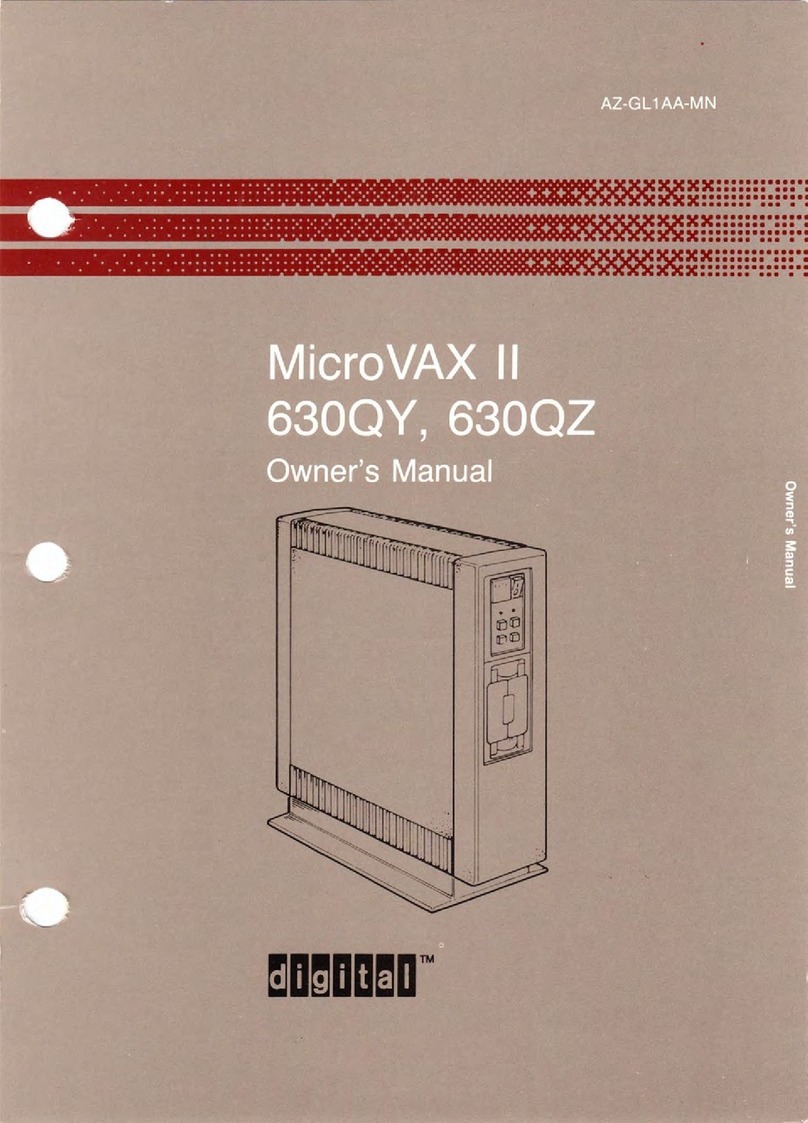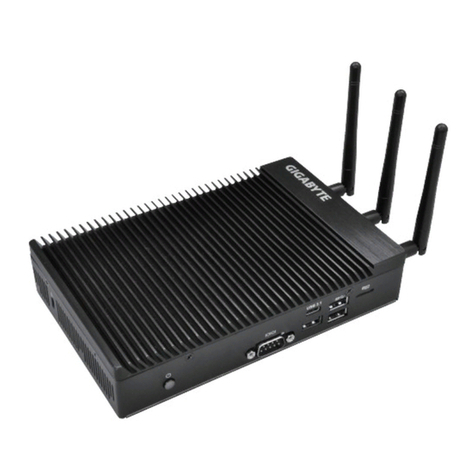Cray CRAY-1 Quick user guide

''--"
c:
RESEARCH
J
INC.
CRAY-1®
COMPUTER
SYSTEMS
HARDWARE
REFERENCE
MANUAL
HR-0004
Copyright©
1976, 1977, 1978, 1979, 1980, 1982
by
CRAY RESEARCH, INC.
This
manual
or
parts
thereof
may
not
be
reproduced
in
any
form
without
permission
of
CRAY RESEARCH, INC.

RECORD OF REVISION
RESEARCH.
INC.
PUBLICATION
NUMBER
HR-0004
Each
time
this
manual
is
revised and
reprinted,
all
chan~es
issued against
the
previous version in
the
form
of
change packets are
incorporated
into
the
new
version and
the
new
version
IS
assigned an alphabetic level. Between reprints, changes
may
be
issued
against
the
current
version in
the
form
of
change packets. Each change
packet
is
assigned a
numeric
designator starting
with
01
for
the
first
change
packet
of
each revision level. '
Every page changed
by
a
reprint
or
by
a change
packet
has
the
revision level and change
packet
number
in the
lower
righthand
corner. Changes
to
part
of
a page are
noted
by
a change bar along
the
margin
of
the
page. A change bar in
the
margin opposite
the page
number
indicates
that
the
entire
page
is
new; a
dot
in
the
same
place indicates
that
information
has
been moved
from
one page
to
another,
but
has
not
otherwise changed.
Requests
for
copies
of
Cray Research, I
nco
publications
and
comments
about
these
publications
should be
directed
to:
CRAY
RESEARCH,
INC.,
1440
Northland
Drive.
Mendota
Heights, Minnesota
55120
Revision Description
January
1976
-Original
printing
A
r,1ay
1976
-Repri
nt
wi
th revi sion
A-01
September
1976
-Corrections to pages 3-20, 3-27, 4-9, 4-10,
4-28, 4-36, 4-43, 4-55,
and
4-57.
B October
1976
-Reprint with revision. Addition of
floating
point range
error
detection,
vector
floating
point
error,
and
error
correction.
3-01
February
1977
-
Changes
to exchange pckage, additions
to
instructions
152
and
153, corrections to
syndrom
bit
description,
corrections
to
instruction
summary,
appendix
D.
B-02
July
1977
-Corrections
and
changes to pages
xi,
2-3, 3-19
-.....-/
through 3-28.1, 3-31, 3-34, 3-36, 3-38, 4-14 through 4-17, 4-54,
4-68, 5-1, 5-3, 5-4, 5-6, 6-2,
A-4,
0-1
through n-4.
C
November
1977
-This
printing
obsoletes revision
B.
Features
added
include 8-bank phasing
and
I/O
master
clear
procedure.
Chart tape
reflects
only changes introduced with
this
revision.
C-01
Apri
1
1978
-
Thi
s change packet changes the
nomencl
ature
for
tv/O
flags in the exchange package (page 3-37)
and
corrects
technical
errors
on
pages 2-11, 4-71, 5-6, 6-5,
and
A-3.
C-02
July
1978
-This change packet
documents
changes
to
the physical
description of the
CRAY-1
Computer
System.
Changes
are
all
in
section 2.
o August
1978
-This
printing
is
exactly the
same
as
revision
C
with change packets
C-Ol
and
C-02
incorporated.
HR-0004
i i F

Revision
Description
E
May
15, 1979 -Reprint with reV1Slon. This
printing
corrects
the description
of
the multiply algorithm
and
adds
descriptions
of various standard options
(i.e.,
vector population
instructions,
programmable
clock
interrupt,
and
monitor
mode
interrupt).
In
addition,
sections 5
and
6
have
been
reHritten.
Revision E obsoletes versions C
and
Dof
this
publication.
E-Ol
May,
1980
-This change packet
documents
changes to the multiply
functional
unit
that
supports symmetrical multiply, documents
CAL
instruction
changes,
and
corrects
miscellaneous technical
errors.
Changes
are noted
by
change bars.
F
May,
1982
-This
reprint
with revision incorporates
revision
E
with E-Ol.
With
this
printing,
the publication
number
has
been
changed to HR-0004.
No
other changes
have
been
made.
HR-0004
i i .i


I
CONTENTS
1.
2.
INTRODUCTION
. . . . .
COMPUTATION
SECTION
MEMORY
SECTION
. . . .
INPUT/OUTPUT
SECTION
VECTOR
PROCESSING
. .
PHYSICAL
ORGANIZATION
INTRODUCTION
.
MAINFRft}1E
. .
Modul
es
. .
Clock
. .
Power
supplies
PRIMARY
POWER
SYSTEM
.
COOLING
. . . . . . .
MAINTENANCE
CONTROL
UNIT
FRONT-END
COMPUTER
. . . . . .
EXTERNAL
INTERFACE
. . .
MASS
STORAGE
SUBSYSTEM
.
3.
COMPUTATION
SECTION
INTRODUCTION
. . . .
REGISTER
CONVENTIONS
.
OPERATING
REGISTERS
Vregi
sters
. .
V
register
reservations
Vector control registers
VL
register
VM
register
S registers
T regi
sters
A registers . . . . . . . . . . . . . . . . . .
B registers
2240004
iii
· 1-1
· . 1-4
· . 1-5
· . 1-5
· . 1-6
·
2-1
· . 2-1
· 2-1
· 2-1
2-4
2-5
2-5
· 2-6
2-6
2-7
· 2-7
· .
2-8
· 3-1
. . . . . 3-1
· .
3-3
· . 3-3
· .
3-4
3-5
· .
3-6
· .
3-6
·
3-6
· . 3-7
...
3-8
...
3-8
· .
3-9
E

I
FUNCTIONAL
UNITS
. . . . . . . . · . 3-10
Address functional
units
Address
add
unit
Address multiply
unit·
Scalar
functional
units
Scalar
add
unit
Scalar
shift
unit
Scalar
logical
unit
Population/leading zero count
unit
Vector functional
units
.......
.
· . 3-11
· .
3-11
3-11
3-12
· . 3-12
· 3-12
· . 3-13
· . . 3-13
· 3-13
Vector functional
unit
reservation
..
·3-13
Recursive
characteristic
of
vector functional
units
3-14
Vector
add
unit
. . . . . . . . . . . . . . 3-17
Vector
shift
unit
Vector
logical
unit
Vector population count
unit.
Floating point functional
units.
Floating point
add
unit
Floating point multiply
unit.
Reciprocal approximation
unit
·
..
3-17
· 3-17
· 3-18
· . 3-18
· . 3-18
· . 3-19
ARITHMETIC
OPERATIONS
· . 3-19
· 3-20
..
3-20
Integer
arithmetic
Floating point
arithmetic.
Normalized
floating
point
Floating
point
range
errors
.....
Floating point
add
unit
Floating
point
multiply
unit.
· 3-21
· 3-22
3-22
.
......
3-23
..
3-23
Floating
point
reciprocal approximation
unit.
3-23
Double
precision
numbers.
Addition algorithm
Multiplication
algorithm
Division algorithm
LOGICAL
OPERATIONS
2240004
iv
· 3-24
3-24
· 3-25
·
..
3-30
· 3-31
E

INSTRUCTION
ISSUE
AND
CONTROL
P
register
CIP
register
NIP
register
LIP
register
Instruction
buffers
EXCHANGE
MECHANISM
XA
regi
ster
. .
M
register
.
F
register
..
Exchange
package
Memory
error
data
Active exchange package
. .
.
Exchange
sequence . . . . . . . . . . . . . . . .
Initiated
by
dead
start
sequence
.....
Initiated
by
interrupt
flag
set
Initiated
by
program
exit
....
Exchange
sequence issue conditions
...
Exchange
package
management
MEMORY
FIELD
PROTECTION
BA
regi
ster
LA
regi
ster
. .
DEAD
START
SEQUENCE
4.
INSTRUCTIONS
...
INSTRUCTION
FORMAT
.
Arithmetic, logical format
Shift,
mask
format
Immediate
constant
format.
Memory
transfer
format
Branch
format . . . .
SPECIAL
REGISTER
VALUES
2240004
v
.
.
3-32
3-32
3-33
3-33
. 3-34
3-34
. . . . 3-37
· . . 3-37
· 3-37
· . 3-39
· 3-40
· 3-41
3-42
· . . 3-42
· . 3-43
·
..
3-43
· . 3-43
3-44
3-45
· . 3-46
· . 3-47
· . 3-47
· . 3-47
4-1
·
..
4-1
· 4-1
· 4-2
·
..
4-2
· 4-3
· 4-4
· 4-5
E

I
I
INSTRUCTION
ISSUE
INSTRUCTION
DESCRIPTIONS
2240004
000000
Error
exit
001
ij k
0014jk
0020xk
0021xx
0022xx
003xjx
004xxx
005xjk
006i
j
km
007ijkm
010ijkm
011
ij
km
012ijkm
013ijkm
014ijkm
015ijkm
016ijkm
017ijkm
020ijkm
021
ij
km
022i
j k
023ijx
024ijk
025i
j k
026i
jO
026ij1
027i
jx
030i
j k
031
ij k
032i
j k
033i
j k
Monitor functions
Programmable
clock
interrupt
functions
Transmit
(Ak)
to
VL
Set
floating
point
mode
flag in M
register.
Clear
floating
point
mode
flag in M
register.
Transmit (Sj) to vector
mask
Normal
exit
Branch
to (Bjk)
Branch
to ij
km
.
Return
jump
to ijkm;
set
Boo
to
(P)
Branch
to ijkm
if
(Ao)
= 0 .
Branch
to ijkm
if
(Ao)
to.
Branch
to ijkm
if
(Ao)
positive
Branch
to ijkm
if
(Ao)
negative
Branch
to ijkm
if
(So)
= 0 .
Branch
to ijkm
if
(So)
t 0
Branch
to ijkm
if
(So)
positive
Branch
to ijkm
if
(So)
negative
Transmit
jkm
to
Ai
Transmit
complement
of
jkm
to
Ai
Transmit
jk
to
Ai
Transmit (Sj) to
Ai
Transmit (Bjk) to
Ai
Transmit (Ai) to
Bjk
Population count of (Sj) to
Ai
Population count
parity
of (Sj) to
Ai
Leading zero count of (Sj) to
Ai
Integer
sum
of (Aj)
and
(Ak)
to
Ai
Integer
difference
of (Aj)
and
(Ak)
to
Ai
Integer product of (Aj)
and
(Ak)
to
Ai
Transmit
I/O
status
to
Ai
vi
· 4-5
4-6
· 4-7
4-8
· 4-10
· 4-12
4-13
4-13
4-14
4-15
· 4-16
4-17
· 4-18
4-19
· 4-19
· 4-19
. . 4-19
4-20
· 4-20
. 4-20
4-20
4-21
· 4-21
4-22
· 4-23
· 4-24
· 4-24
· 4-25
4-25
4-26
· 4-27
· 4-27
· 4-28
4-29
E

2240004
034i
j k
035i
j k
036ijk
037i
j k
040ijkm
041
ij
km
042ijk
043i
j k
044i
j k
045i
j k
046i
j k
047i
j k
050i
j k
051
ij k
052i
j k
053i
j k
054i
j k
055i
j k
056ijk
057ijk
060ijk
061
ij k
062ijk
063i
j k
064i
j k
065ijk
066i
j k
067ijk
070ijx
Block
transfer
(Ai)
words
from
memory
starting
at
address
(Ao)
to B
registers
starting
at
register
jk
4-31
Block
transfer
(Ai)
words
from
B
registers
starting
at
register
jk
to
memory
starting
at
address
(Ao)
4-31
Block
transfer
(Ai)
words
from
memory
starting
at
address
(Ao)
to T
registers
starting
at
register
jk
4-31
Block
transfer
(Ai)
words
from
T
registers
starting
at
register
jk
to
memory
starting
at
address
(Ao)
4-31
Transmit
jkm
to
Si
· 4-33
Transmit
complement
of
jkm
to
Si
· 4-33
Form
64
-jk
bits
of
one's
mask
in
Si
from
right
. 4-34
Form
jk
bits
of one's
mask
in
Si
from
left
....
4-34
Logical product of (Sj) to
(Sk)
to
Si
.......
4-35
Logical product of (Sj)
and
complement
of
(Sk)
to
Si
4-35
Logical
difference
of (Sj)
and
(Sk)
to
Si
. . 4-35
Logical equivalence
of
(Sk)
and
co~plement
of
(Sk)
to
Si
. . . . .
..
..............
4-35
Scalar
merge
...................
4-35
Logical
sum
of (Sj)
and
(Sk)
to
Si
. 4-35
Shift
(Si)
left
jk
places to
So
4-38
Shift
(S
i )
Shift
(Si
)
Shift
(S
i )
right
64
-
jk
places to S
left
jk
places to
Si
right
64
-
jk
places to
Si
4-38
...
4-38
4-38
Shift
(S
i )
Shift
(Sj)
and
(Sj)
left
by
(Ak)
places to
Si
.
and
(Si)
right
by
(Ak)
places to
Si
..
4-39
..
4-39
Integer
sum
of (Sj)
and
(Sk)
to
Si
Integer
difference
of (Sj)
and
(Sk)
to
Si
.
Floating
sum
of (Sj)
and
(Sk)
to
Si
....
· 4-40
· 4-40
4-41
Floating
difference
of (Sj)
and
(Sk)
to
Si
. 4-41
Floating product of (Sj)
and
(Sk)
to
Si
......
4-42
Half-precision rounded
floating
product of (Sj)
and
(Sk) to Si
....................
4-42
Rounded
floating
product
of
(Sj)
and
(Sk)
to
Si
..
4-42
Reciprocal
iteration;
2 - (Sj) *
(Sk)
to
Si
....
4-42
Floating reciprocal approximation of (Sj) to
Si
..
4-44
vii
E

2240004
071
ijk
072ixx
073ixx
074ijk
075i
j k
076i
j k
077
ij k
10hijkm
11hi
j
km
12hijkm
13hijkm
140ijk
141
ijk
142i
j k
143i
j k
144ijk
145ijk
146ijk
147i
j k
150ijk
151ijk
152ijk
153ijk
154i
j k
155ijk
Transmit
(Ak)
or normalized
floating
point constant
to
Si
. . . . . . . . . . . . . . .
4-45
Transmit
(RTC)
to
Si
.....
.
....
4-47
Transmit
(VM)
to
Si
. . .
..
4-47
Transmit (Tjk) to
Si
Transmit (Si) to
Tjk
Transmit
(Vj
element
(Ak))
to
Si
Transmit (Sj) to
Vi
element
(Ak)
Read
from
((Ah)
+
jkm)
to
Ai
Store (Ai) to
(Ah)
+
jkm
Read
from
((Ah)
+
jkm)
to
Si
Store (Si) to
(Ah)
+
jkm
...
· . 4-47
. . . . 4-47
4-48
· . 4-48
. 4-49
...
4-49
4-49
· . 4-49
Logical products of (Sj)
and
(Vk
elements) to
Vie
1
eme
nts . . . . . . . . . . . . . . . .
..
4-
51
Logical products of
(Vj
elements)
and
(Vk
elements)
to
Vi
elements . . . . . . . . . . . .
..
4-51
Logical
sums
of (Sj)
and
(Vk
elements) to
Vi
elements . . . . . .
......
4-51
Logical
sums
of
(Vj
elements)
and
(Vk
elements) to
Vi
elements..
....
. . . . .
4-51
Logical differences of (Sj)
and
(Vk
elements) to
Vi
elements.
. . . . . . . . . . . . . .
..
.
4-51
Logical differences
of
(Vj
elements)
and
(Vk
elements to
Vi
elements.
. . . . . . . . . .
4-51
If
VM
bit
= 1, transmit (Sj) to
Vi
elements
If
VM
bit
= 0, transmit
(Vk
elements) to
Vi
If
VM
bit
= 1, transmit
(Vj
elements) to
Vi
If
VM
bit
=
0,
transmit
(Vk
elements) to
Vi
Single
shifts
of
(Vj
elements)
left
by
(Ak)
to
Vi
elements . . . . . .
...
Single
shifts
of
(Vj
elements)
right
by
(Ak)
to
Vi
elements
.............
.
elements4-51
elements
elements4-51
places 4-55
places 4-55
Double
shifts
of
(Vj
elements)
left
by
(Ak)
places
to
Vi
elements
..
. . . . . . . .
..
.
...
4-56
Double
shifts
of
(Vj
elements)
right
by
(Ak)
places
to
Vi
elements
..................
4-56
Integer
sums
(Sj)
and
(Vk
elements) to
Vi
elements.
4-61
Integer
sums
(Vj
elements)
and
(Vk
elements) to
Vi
elements
....................
4-61
viii
E

156i
j k
157ijk
160i
j k
161
ijk
162ijk
163ijk
164i
j k
165ijk
166i
j k
167ijk
170i
j k
171
ijk
172i
j k
173ijk
174ijO
I 174ij1
174ij2
175xj k
176ixk
177xj k
2240004
Integer
differences
of (Sj)
and
(Vk
elements) to
Vi
elements . . . . . . . . . . . . . . .
..
. 4-61
Integer
differences
of
(Vj
elements)
and
(Vk
elements) to
Vi
elements . . . . . . 4-61
Floating products of (Sj)
and
(Vk
elements) to
Vi
elements . . . . . . . . . . . . . . . . . 4-63
Floating products of
(Vj
elements)
and
(Vk
elements) to
Vi
elements
.............
4-63
Half-precision rounded
floating
products of (Sj)
and
(Vk
elements) to
Vi
elements
..
. . . . 4-63
Half-precision rounded
floating
products of
(Vj
elements)
and
(Vk
elements) to
Vi
elements . 4-63
Rounded
floating
products
of(Sj)
and
(Vk
elements
to
Vi
elements . . . . . . . . . . . . . . 4-63
Rounded
floating
products 0 f
(V
j elements)
and
(Vk
elements) to
Vi
elements . .
..
. 4-63
Reciprocal
iterations;
2 - (Sj) *
(Vk
elements) to
Vi
el
ements
....................
4-63
Reciprocal
iterations;
2 -
(Vj
elements) *
(Vk
elements) to
Vi
elements . . . . . 4-63
Floating
sums
of (Sj)
and
(Vk
elements) to
Vi
elements
..
. . . . . . . . . . . . . . . . . . . 4-66
Floating
sums
of
(Vj
elements)
and
(Vk
elements)
to
Vi
elements
..................
4-66
Floating
differences
of (Sj)
and
(Vk
elements) to
Vi
elements . . . .
..
.....
. 4-66
Floating
differences
of
(Vj
elements)
and
(Vk
elements) to
Vi
elements
...
. . . .
.. ..
4-66
Floating point reciprocal approximations of
(Vj
elements) to
Vi
elements
...........
4-68
Population counts
of
(Vj
elements) to
Vi
elements
Population count
parities
of
(Vj
elements) to
Vi
elements . . . . . . . . . . . . . . . . . . . . . 4-70
Test
(Vj
elements)
and
enter
test
results
into
VM;
the type of
test
made
is
defined
by
k
.......
4-71
Transmit
(VL)
words
from
memory
to
Vi
elements
starting
at
memory
address
(Ao)
and
incrementing
by
(Ak)
for
successive addresses
.........
4-73
Transmit
(VL)
words
from
Vj
elements to
memory
starting
at
memory
address
(Ao)
and
incrementing
by
(Ak)
for
successive addresses
.........
4-73
i x E

I
I
I
5.
MEMORY
SECTION
INTRODUCTION
.
MEMORY
CYCLE
TIME
MEMORY
ACCESS
MEMORY
ORGANIZATION
MEMORY
ADDRESSING
SPEED
CONTROL
8-BANK
PHASING
OPTION
MEMORY
PARITY
ERROR
CORREC7ION
6.
INPUT/OUTPUT
SECTION
I/O
CHANNELS
•.
.
I/O
instructions
Basic channel operation
Input channel
programming
Output channel
programming
16-bit
asynchronous channels
Input channels
Output channels
16-bit
high-speed asynchronous channels
Input channels
Output channels
16-bit
synchronous channels .
Input channels
Output channels
PROGRAMMED
MASTER
CLEAR
TO
~XTERNAL
MEMORY
ACCESS
I/O
lockout.
. .
Memory
bank
conflicts
I/O
memory
conflicts
I/O
memory
request conditions
I/O
memory
addressing
REAL-TIME
CLOCK
.
PROGRAMMABLE
CLOCK
OPTION
2240004
x
5-1
5-1
5-1
5-1
5-3
5-4
5-4
5-5
5-5
6-1
6-1
6-1
6-2
6-3
6-7
6-7
6-7
6-9
6-10
6-10
6-12
6-13
6-13
6-15
6-17
6-19
6-21
6-21
6-21
6-22
6-22
6-22
6-23
E

,
Interrupt
interval
register
........
.
Interrupt
countdown
counter . . . . . . .
..
.....
.
Clear
programmable
clock
interrupt
request
........
.
APPENDIXES
A
SUMMARY
OF
TIMING
INFORMATION
B
MODULE
TYPES
. . . . . .
C
SOFTWARE
CONSIDERATIONS
o
INSTRUCTION
SUMMARY
2240004
xi
6-23
6-24
6-24
A-I
B-1
C-l
0-1
E

FIGURES
1-1
2-1
2-2
2-3
3-1
3-2
3-3
3-4
3-5
3-6
3-7
3-8
4-1
4-2
4-3
4-4
4-5
4-6
I
5-1
5-2
I 5-3
6-1
6-2
2240004
Basic computer system
........
.
Physical organization
of
the mainframe
General chassis layout
Clock
pulse
waveform
Computation section
...
Integer data formats
Floating point data format
49-bit
floating
point addition
Floating point multiply
pyramid
........
.
Relationship of
instruction
buffers
and
registers
..
Instruction
buffers
.....
.
Exchange
package . . . . . . . .
General format for
instructions
.
Format
for arithmetic
and
logical
instructions
Format
for
shift
and
mask
instructions
1-2
· .
2-2
· . 2-3
2-7
3-2
·
..
3-20
· . 3-21
· 3-24
·
3-26
· . 3-32
·
..
3-34
3-38
4-1
· 4-2
· 4-2
Format
for
immediate constant
instructions
Format
for
memory
transfer
instructions
..
......
4-3
Two-parcel format for branch
instructions
.
Memory
address;
16
banks
Memory
data path with
SECDED
.....
Error correction matrix
....
Basic
I/O
program
flow
chart
Channel
I/O
control . . . . . .
xii
. . . . 4-4
· 4-4
· 5-4
5-6
·
..
5-7
· 6-4
6-20
E

TABLES
1-1
Characteristics
of
CRAY-1
Computer
System
.....
2-1
5-1
6-1
6-2
6-3
6-4
6-5
6-6
6-7
2240004
Characteristics
of
a 00-19 Disk Storage Unit
Vector
Memory
rate
*
80
x
10
6 references per second .
Channel
word
assembly/disassembly
............
.
16-bit
asynchronous input channel
signa
1 exchange . . . . . . . . . . . . . . . . . . . . . .
16-bit
asynchronous output channel
signa
1 exchange . . . . . . . . . . . . . . . . . . . . . .
16-bit
high-speed asynchronous input
channel signal exchange
......
.
16-bit
high-speed asynchronous output
channel signal exchange
.....
16-bit
synchronous input channel
signal exchange
........
.
16-bit
synchronous output channel
signal exchange
.............
.
xiii
1-3
2-13
5-4
6-2
6-8
6-9
6-11
6-12
6-14
6-16
E


SECTION 1
INTRODUCTION


INTRODUCTION 1
The
CRAY-1
Computer
System
is
a powerful general-purpose computer capable
of extremely high processing
rates.
These
rates
are achieved
by
combining
scalar
and
vector
capabilities
into
a
single
central processor
which
is
joined to a
large,
fast,
bi-polar
memory.
Vector processing
by
performing
iterative
operations
on
sets
of ordered data provide
results
at
rates
greatly
exceeding
result
rates
of conventional
scalar
processing. Scalar
operations
complement
the vector
capability
by
providing solutions to
problems not
readily
adapted to vector techniques.
Figure 1-1 represents the basic organization of a
CRAY-1
system.
The
central
processor
unit
(CPU)
is
a
single
integrated processing
unit
consisting
of a computation
section,
a
memory
section,
and
an
input/
output
section.
The
memory
is
expandable
from
0.25 million
64-bit
words
to a
maximum
of 1.0 million words.
The
12
input channels
and
12
output channels in the input/output section connect to a maintenance
control
unit
(MCU),
a
mass
storage subsystem,
and
a
variety
of front-end
systems or peripheral equipment.
The
MCU
provides for system
initializa-
tion
and
for monitoring system performance.
The
mass
storage subsystem
provides secondary storage
and
consists
of
one
to eleven
Cray
Research
OCU-2
Disk
Controllers,
each with
one
to four 00-19
Disk
Storage Units.
Each
00-19
has
a capacity
of
2.424 x
10
9
bits.
I/O
channels
can
be
connected to independent processors
referred
to as
front-end computers or
I/O
stations
or
can
be
connected to peripheral
equipment according to the requirements of the individual
installation.
At
least
one
front-end system
is
considered standard to
collect
data
and
present
it
to the
CRAY-1
for processing
and
to receive output
from
the
CRAY-1
for
distribution
to slower devices.
Table
1-1
summarizes the
characteristics
of the system.
The
following
paragraphs provide
an
additional introduction to the three sections of
the
CPU;
later
sections of
this
manual
describe the features in
detail.
2240004
1-1
E

I
r---
- - -
---
-
---
--
--
-
--
--
----
- -
---
- -
--1
I
I
I
L
______
_
/
MCU
2240004
-
'"
COMPUTATION
SECTION
• Registers
• Functional units
• Instruction buffers
MEMORY
SECTION
0.25 Mor 0.5 Mor 1 M
64-bit
bi-polar
words
I/O
SECTION
•
12
input channels
•
12
output channels I
I
/,'''
I I , \ , \ \
'\
-1-1
-f
-i
--- I I \ \ \ \
-+Ir-\"-~
CPU
I
______
..J
I I
I I
/ I
/ I I
/ I
1 I
/ / I
/ I I
I
I
i
I
I
I
I I \ \ \ \ \
I \ \ \ \ \ \
I \ \
I , \
I , \
I \ \
\ \ \ \ \
\ \ \ \
\
'.
\ \
\ \ \ \
\ \ \ \
L I J I I , \ \ \ \
\.
MASS
STORAGE
SUBSYSTEM,
FRONT-END
COMPUTERS,
I/O
STATIONS,
AND
PERIPHERAL
EQUIPMENT
Figure 1-1. Basic
computer
system
1-2
E
Table of contents
Other Cray Desktop manuals
